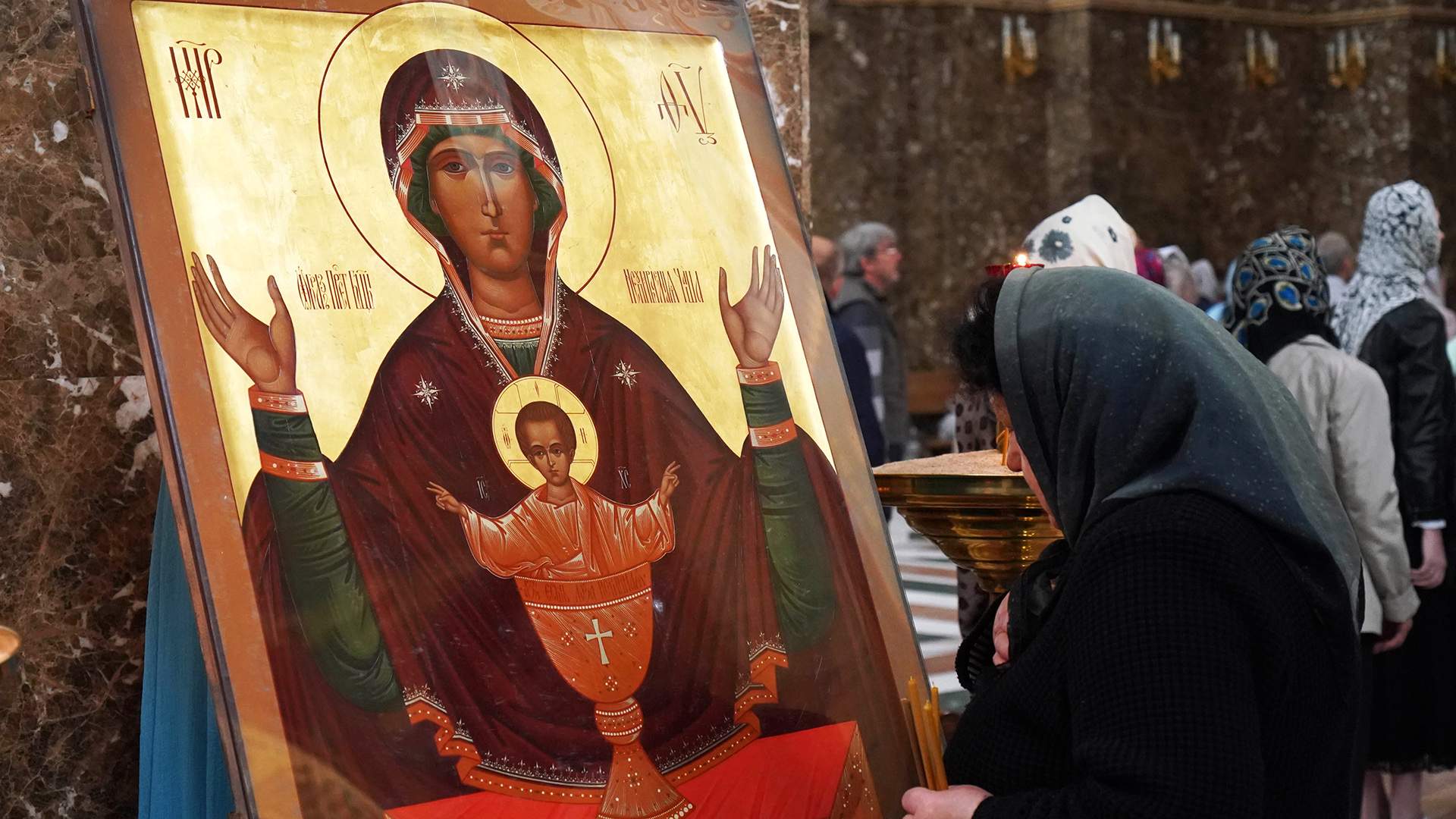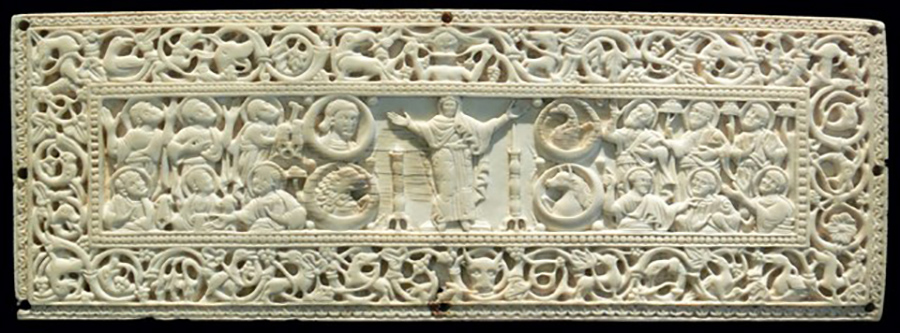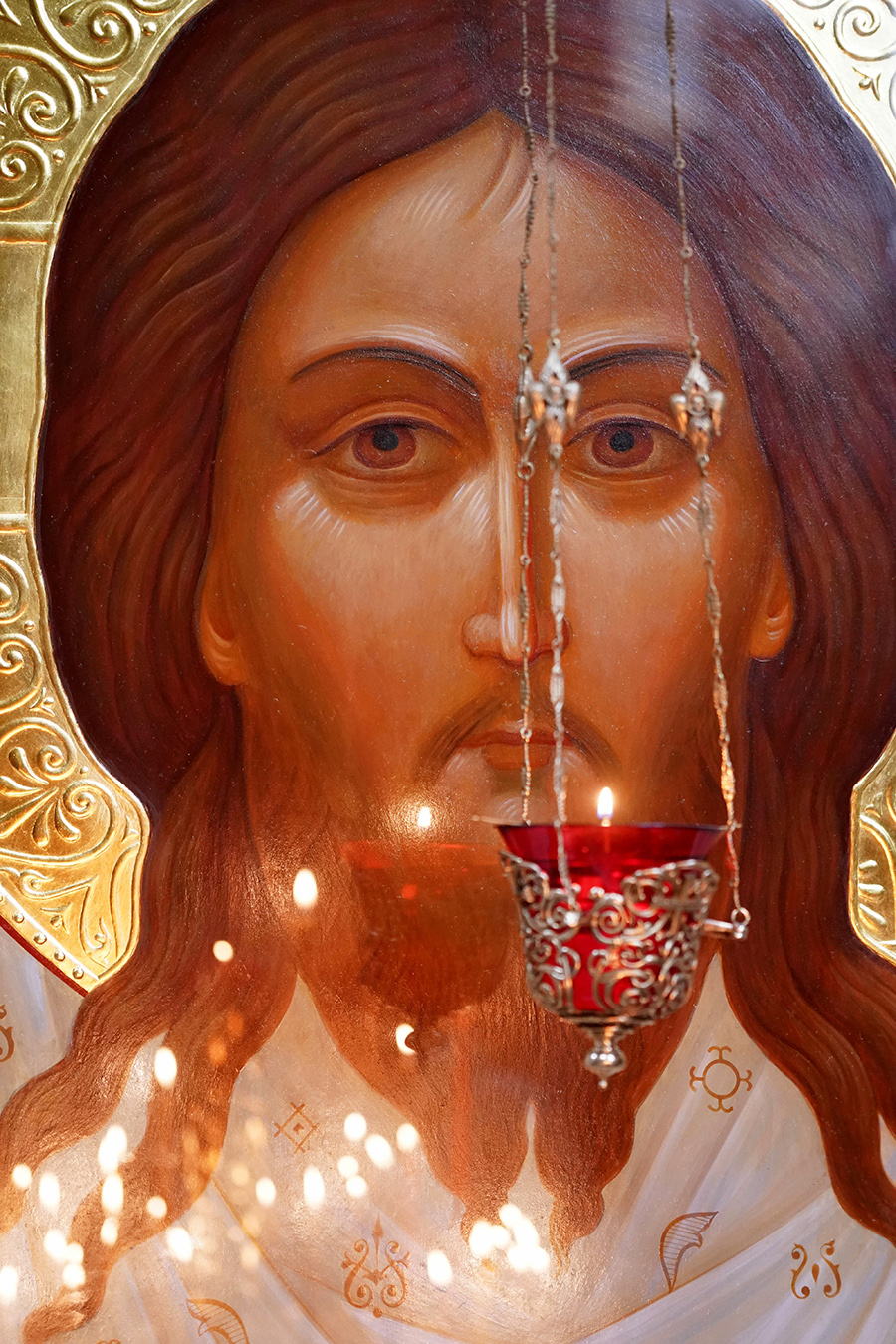- Статьи
- Local news
- The important feast of the Ascension of the Lord: date in 2025, meaning for the Orthodox
The important feast of the Ascension of the Lord: date in 2025, meaning for the Orthodox

At the end of May, Christians will celebrate one of the main church holidays, the Ascension of the Lord. The date of the sacrament is transitional, it is celebrated on the 40th day after Easter and always on Thursday. Read about how this day is described in the Bible, what icons and temples exist in honor of the holiday, and how believers celebrate Ascension Day in the Izvestia article.
When is the Ascension of the Lord for Orthodox and Catholics in 2025
Ascension Day is considered one of the 12 most important Christian holidays. On this day, believers celebrate the ascension of the Son of God to heaven after the Resurrection. This is a rolling holiday, meaning it doesn't have a fixed date. Ascension is celebrated 40 days after Easter and always on Thursday.
Last year, Orthodox Christians celebrated Easter on May 5 and Catholics on March 31, but in 2025, adherents of both churches celebrated the main holiday on April 20. Therefore, this year the Ascension of the Lord falls on the same day for Orthodox and Catholics — on May 29.
The Ascension of the Lord in the Bible: the essence briefly, the meaning for Christians
After Jesus Christ rose from the dead, he remained on earth for another 40 days. During this time, according to the Bible, the Lord repeatedly came to the disciples, strengthening their faith, confirming the existence of his bodily resurrection and preparing them to receive the promised Holy Spirit.
One day, Christ gathered the apostles, led them to the Mount of Olives, gave the disciples a blessing, and ascended to heaven in a transformed human form. The Gospel of Mark mentions this event, the Gospel of Luke speaks in more detail, and the Book of Acts of the Apostles in particular.
"He was lifted up in their sight, and a cloud took him out of their sight. And as they were looking up at heaven, during His ascent, suddenly two men in white clothes appeared to them and said, "Men of Galilee! Why are you standing and looking at the sky? This Jesus, who ascended from you into heaven, will come in the same way as you saw Him ascend into heaven," the New Testament says.
After that, the apostles worshiped the Lord and returned to Jerusalem. A few days later, the Holy Spirit descended upon the disciples, and they had the opportunity to preach in different languages.
It is believed that Christ ascended above heaven to the "right hand of God," but nevertheless the Lord is on earth: he is everywhere, in every Christian.
The Icon and temples of the Ascension of the Lord in Russia
The first images of the Ascension of the Lord date back to the 5th century. One of them is a carved ivory plaque called "Bamberg Avory". Today it is kept in Munich. On the poster, Christ ascends the mountain. At the same time, Jesus holds onto the hand of God, which is visible from the clouds, and ascends into heaven. A similar version of the image of the Lord was popular in Western Europe.

Another version of iconography came to us from Rome also at the beginning of the 5th century. This image of the Ascension of Christ was found on the wooden door of the church of Santa Sabina. Jesus rushes upward. There are four angelic beings on opposite sides of the Lord. They seem to be carrying Christ on their wings, and the Virgin Mary and the Apostles Peter and Paul are shown from below.
Today, the iconography of the Ascension is an image with two central points of focus — on Jesus and on the Mother of God. There are flying angels on either side of Christ.
There are about 600 Ascension churches throughout Russia. Some of the most famous are located in Moscow. Among them are the Church of the Ascension in Kolomenskoye, the Bolshoe Voznesenie temple at the Nikitsky Gate and the Church of the Ascension of the Lord on the Gorokhov Field.
The Church of the Ascension in Kolomenskoye has a special significance. The temple belongs to one of the first stone tent buildings in Russia. The temple was built in the 30s of the XVI century. The church combines features of Russian architecture and Western European architecture, which is unusual for objects of that time. In the late 1990s, the church was added to the UNESCO World Heritage List. For comparison, only the Kremlin, Red Square and the Novodevichy Monastery have this status among Moscow cultural sites.
The Church of the Ascension of the Lord at the Nikitsky Gate, the main altar of which was consecrated in honor of the Ascension of Christ, was built at the end of the 17th century. Since the 1930s, the church has had a warehouse, a garage and a scientific laboratory. In the 1990s, the church was transferred to the Russian Orthodox Church.
The Church of the Ascension of the Lord on the Pea Field was built in the XVIII century. Her parishioners were also Pushkins — for example, Alexander Pushkin's brother Mikhail was baptized here.
There are temples dedicated to the Ascension of the Lord in all Russian cities, especially in religious and cultural centers, such as Vladimir, Nizhny Novgorod, Yekaterinburg, Perm, Ufa, Rostov-on-Don, Samara, Tula, Pskov and other Russian cities.
How can the Orthodox celebrate the Ascension of Jesus Christ
According to tradition, believers visit churches and participate in divine services on this day. During the time of tsarist Russia, people did not work on the Ascension of the Lord and dedicated this day to God. According to Priest Alvian Tkhelidze, it is important to remember the essence of the holiday.
— If you don't have the opportunity to take a day off for yourself on this day, then you need to try to keep in mind the idea that today is a big holiday. And at least go to the temple for a while and pray. On the feast of the Ascension, priests take off their red Easter liturgical vestments and put on white ones. Easter hymns stop in churches, and believers stop greeting each other with the Easter "Christ is risen! He is truly risen!", — Alvian Tkhelidze told Izvestia.
There are other limitations. For example, on a holiday, it is not recommended to devote much time to household chores — it is better to do this before Ascension in order to meet the celebration in purity. Also, on a holiday, as on other days, an Orthodox believer should not conflict, be sad, gossip, lend money, or even celebrate weddings.
One of the Ascension traditions is to bake cookies or dough buns in the shape of a ladder, says Larisa Mikallef, Associate professor of the Department of Foreign Languages and Intercultural Communication at the Financial University under the Government of the Russian Federation, Candidate of Philological Sciences.
— In some families, they still bake ladders, carry out general cleaning of the house before the holiday and the whole family goes to the temple. In Orthodox churches, festive services are held, which end with the solemn removal of the Shroud, a cloth with the image of the face of Christ. It is also customary to help others on Ascension Day by remembering how Christ appeared to the disciples in the form of a pilgrim. In addition, it is customary to make donations or do charity work on this day," Larisa Mikallef notes.

According to Vladimir Buzin, Candidate of Historical Sciences, lecturer at the Department of Ethnography and Anthropology at the Faculty of History of St. Petersburg State University, few people observe Ascension Day rituals today, although some families still retain the memory of traditions. Among the church holidays nowadays, only Trinity and Maslenitsa are celebrated taking into account traditions.
What do they pray for at the Ascension of the Lord?
On the day of Christ's Ascension, one can pray for the repose of the souls of relatives and other people, for the fulfillment of one's innermost desires, for the protection of the family, for one's own health, the health of loved ones, for prosperity — for all good things.
And you can pray in your own words. It is important that prayers should be read sincerely and not to icons, but to the saints who are depicted on them. You can not pray sitting down or at the top of your voice — it is allowed in a whisper or mentally. Candles are not allowed to be placed, but a candle is considered the embodiment of a person's conversion to God, and a candle flame is a symbol of faith. In addition, it is better to begin prayer with gratitude to the Lord.
According to Priest Alvian Tkhelidze, on Ascension Day in churches, those that reveal the essence of the holiday are added to the usual liturgical texts.
Here is one of the songs of praise for the Ascension of the Lord.:
"Forbidden Voivode, Creator of heaven and earth! To the conqueror of death we offer praiseworthy hymns, for after Your most luminous Resurrection from the dead you ascended into heaven with glory and ascended with Your most pure flesh to the right hand of God and the Father, and you also exalt our fallen nature with You, and be free from sins and from eternal death forever. We celebrate Your Divine Ascension with Your disciples, crying out to You from the bottom of our hearts: Jesus, ascend from us to heaven, do not leave us alone."
Russian rites for the Ascension on May 29
There were many traditions in Russia on Ascension Day. People rethought the name of the holiday and interpreted it as a "rise" in the literal sense of the word, primarily vegetation, says ethnographer Vladimir Buzin. According to him, people threw Easter eggs into the fields where rye and wheat grew and asked the ears to rise to heaven.
— On this day, people threw cookie ladders from the bell tower. We went down from the bell tower and looked to see if the cookies had survived. If the ladder is intact, then the person is righteous, he will "ascend" to the Kingdom of Heaven. If all the cookie steps are broken, then the person is an inveterate sinner," the expert explains.
However, Larisa Micallef claims that the ladders were not thrown from the bell tower, but were distributed to beggars and treated to guests. At the same time, since the ladders symbolized the way of Christ to heaven, there should be exactly seven steps in them, according to the number of heavens described in the Book of Enoch.
Lydia Kroshkina, Associate Professor of the Department of History and Theory of Culture at RSUH, notes that the writer Ivan Shmelev calls the ladders of Christ in the novel "Summer of the Lord." "We ate them carefully, crossing ourselves. Whoever breaks the ladder will not ascend to heaven, the sins are grave. Sometimes you carried a ladder with fear, you peed on the edge of the table and bit step by step. Gorkin will always ask if I broke the ladder, otherwise they'll talk about Petrovki," the book says.
In addition, pies with green onions were baked on Ascension Day, as evidenced by a Russian proverb. And Vladimir Dahl mentioned in his "Dictionary" two more dishes that were usually prepared for Ascension: chicken and pancakes. But they were not eaten, but were taken out into the field and left there: dried meat — "for Christ's food", pancakes — "for Christ's sake".
— Houses and temples, as well as on Whitsunday, were decorated with birch branches, and in some regions girls wove wreaths and let them float on the water, making a wish. It was believed that with Ascension, the real summer begins, the frosts stop and the bathing season opens. Ritual dances dedicated to the future harvest were often held," Larisa Mikallef notes.
Today, such ceremonies are not held, although those who participated in them are still alive, Vladimir Buzin comments. They are mostly residents of rural areas. According to Buzin, who often travels to villages and conducts field research, people are happy to talk about the traditions of the Ascension of the Lord.
How are the Ascension and Trinity holidays related?
The Ascension of the Lord and the Day of the Holy Trinity (Trinity) have a symbolic connection. Trinity is celebrated exactly on the fiftieth day after Easter, therefore the second name of the holiday is Pentecost.
According to the Bible, it was on Whitsunday, 10 days after the Lord ascended to heaven, that the Holy Spirit descended upon the apostles. According to the New Testament, from that moment on, the disciples began to speak in different languages. This allowed the apostles to preach to nations all over the world.
Переведено сервисом «Яндекс Переводчик»









